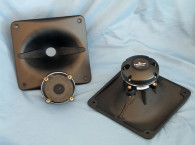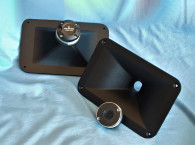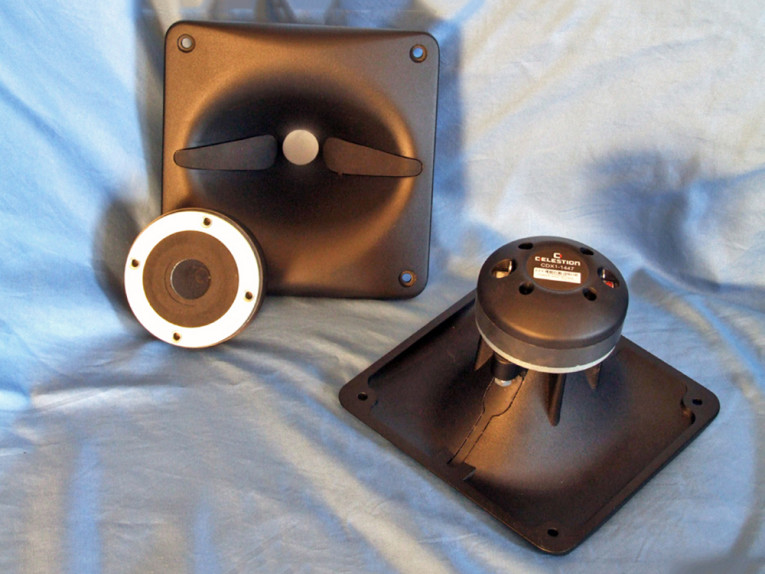
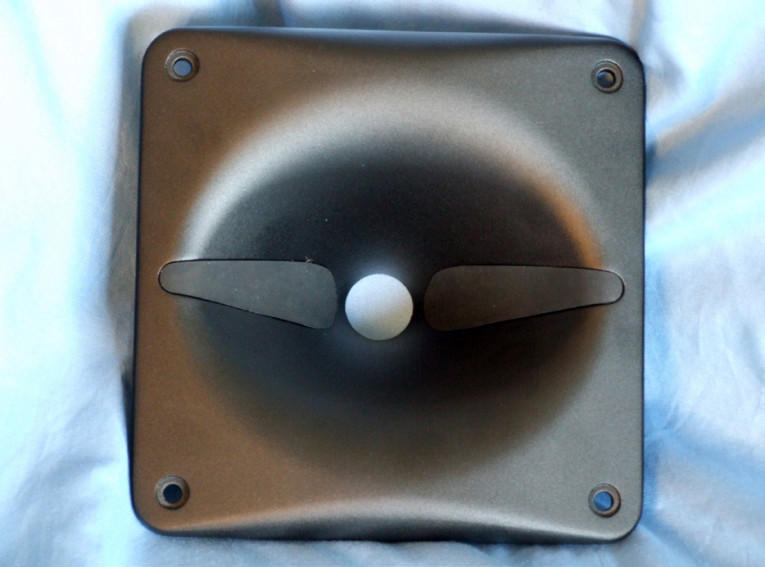
The horn supplied with the CDX1-1447 was a new and rather innovative design. The H1-7050 “No Bell” is a cast-aluminum exponential flare-type horn with a 70° × 50° radiation pattern. The “No Bell” part refers to the general bell ringing character of cast-aluminum horns when you “ping” them with your finger. In order to dampen this parasitic ringing, Celestion has cut out (well, molded out) a horizontal section on either side of the 1” exit and filled it with elastomer side panels (see Photo 2) to make the horn more acoustically inert. (I used to spray foam on the back sides of horns in the 1980s to accomplish the same objective!) After giving the H1-7050 the traditional “ping” test, I found the elastomer panels function quite effectively.
I commenced testing on the CDX1-1447/H1-7050 using the LinearX LMS analyzer to produce the 200-point stepped sine wave impedance plot shown in Figure 1. The solid black curve is the response with the CDX1-1447 mounted on the H1-7050 horn and the dashed blue curve shows the compression driver’s response curve without the horn. With a 6.28 Ω DCR, the minimum impedance of the CDX1-1447/H1-7050 was 7.59 Ω and at 3.88 kHz.
Next, I mounted the CDX1-1447/H1-7050 without an enclosure in free air then measured both the horizontal and vertical on and off axis at 2.83 V/1 m using a 100-point gated sine wave sweep. Figure 2 shows the on-axis of the compression driver/horn combination for the CDX1-1447. The response is approximately ±2 dB from the minimum recommended crossover frequency of 2.2 kHz to 10 kHz, with a declining response above 14 kHz where the low-pass roll-off begins.
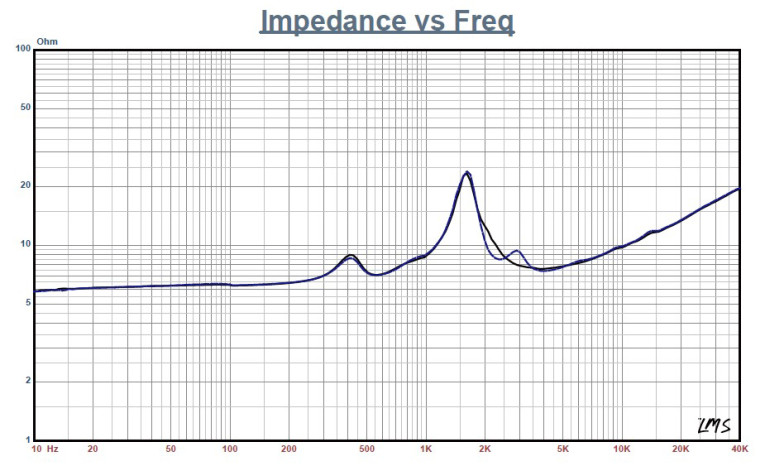
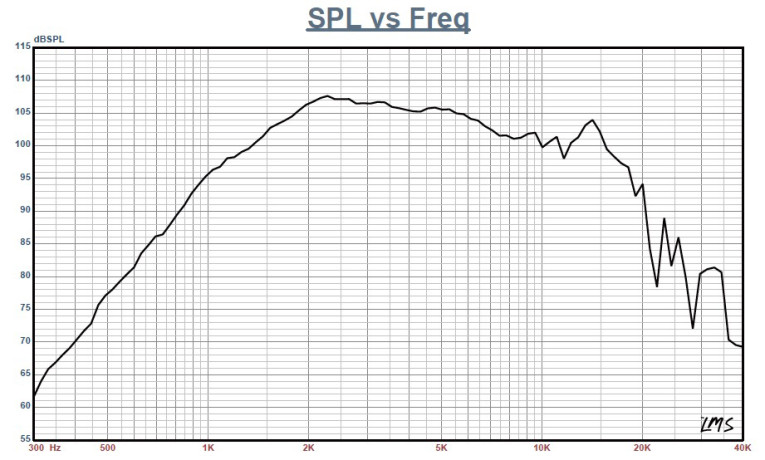
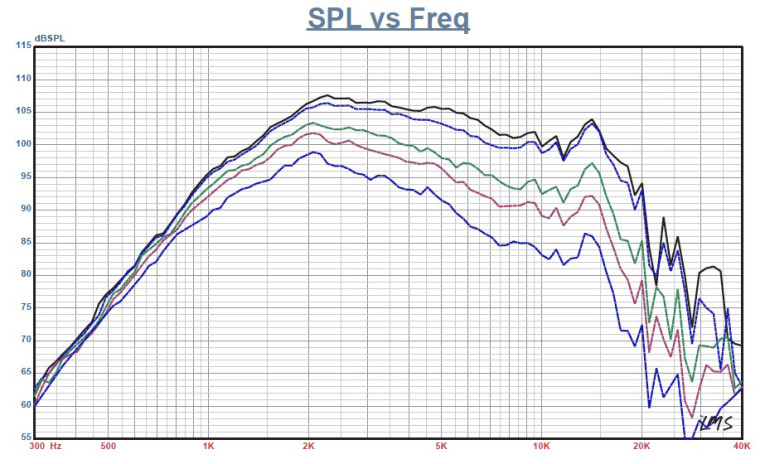


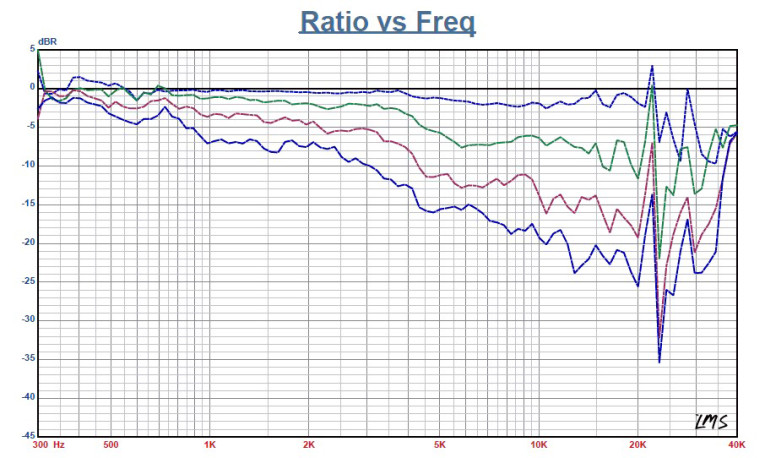
With the H1-7050 horn’s coverage pattern at 70°H × 50°V, you would expect some directivity difference in the horizontal and vertical off-axis plots, which is true as seen in Figure 3 for the horizontal orientation and in Figure 4 for the vertical orientation. Plots with the off axis normalized to the on-axis response for the horizontal and vertical axis measurements are shown in Figure 5 and Figure 6.
The CLIO Pocket analyzer polar plots (in 10° increments) are shown in Figure 7 and Figure 8, respectively. Figure 9 gives the two-sample SPL comparison of the CDX1-1447/H1-7050, showing both samples to be closely matched within 0.5 to 1 dB.
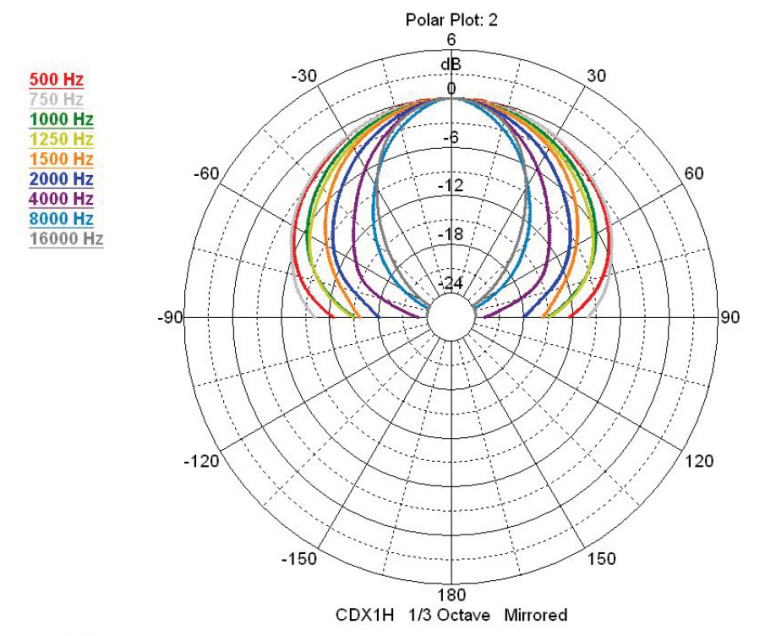

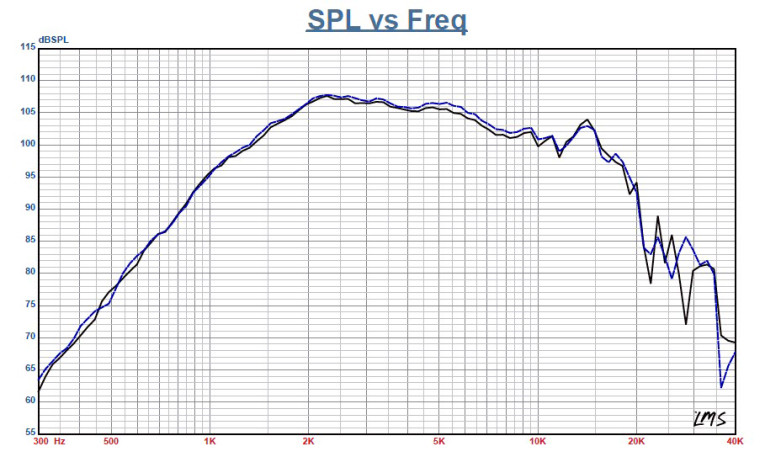
For the remaining tests, I employed the Listen AmpConnect ISC analyzer and 0.25” SCM microphone, using SoundCheck 14 software to measure distortion and generate time-frequency plots. For the distortion measurement, I mounted the CDX1-1447/H1-7050 combination in free air sans baffle and used a pink noise stimulus to set the SPL to 104 dB at 1 m (2.68 V). I measured the distortion with the Listen microphone placed 10 cm from the mouth of the horn. Figure 10 shows the distortion curves. I then used SoundCheck to get a 2.83 V/1 m impulse response and imported the data into Listen’s SoundMap Time/Frequency software. Figure 11 shows the resulting CSD waterfall plot. Figure 12 shows the STFT plot.
The CDX1-1447 is a solid performer with the usual excellent build quality that Celestion always delivers. As far as the H1-7050 horn goes, I certainly applaud any effort to suppress parasitic ringing in horns, so this is definitely innovative. However, this is probably more appreciated when the H1-7050 is used in a studio monitor application, as I suspect any ringing would get buried in the mix when it is used in a PA situation. For more information, visit celestion.com. VC
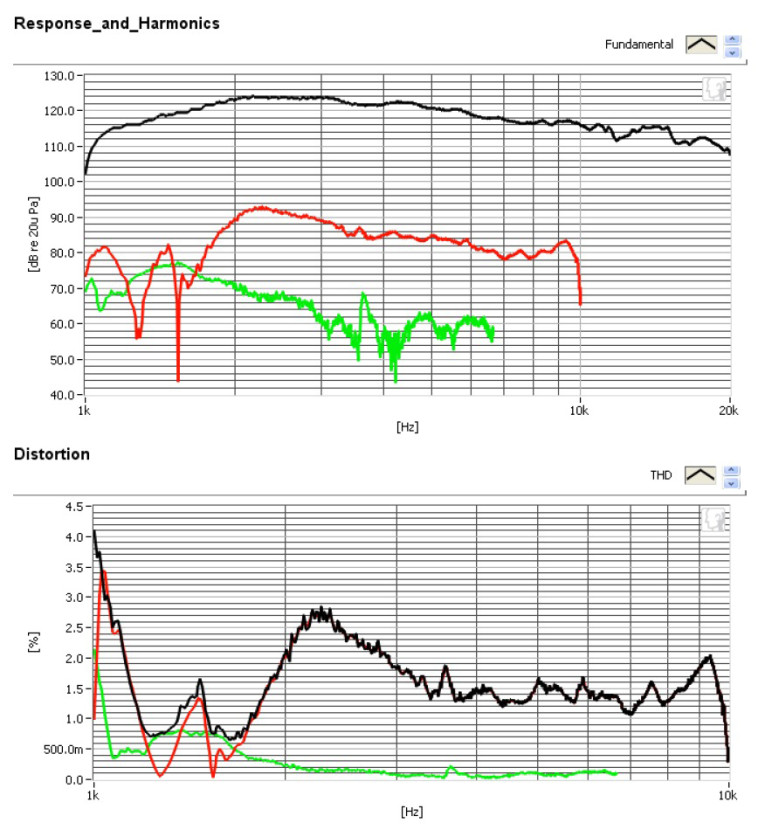
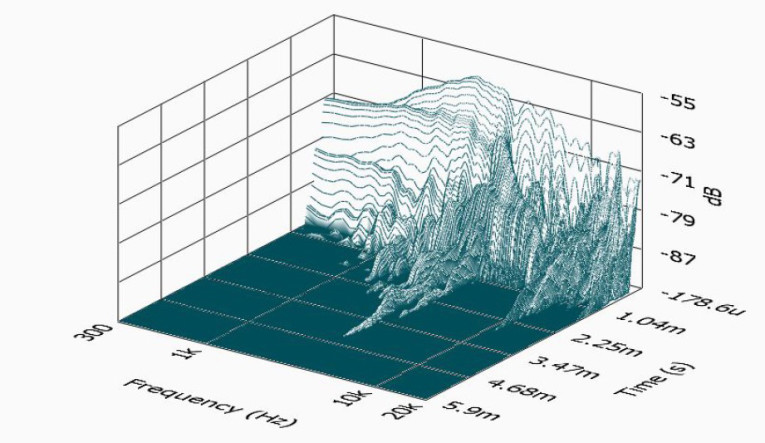
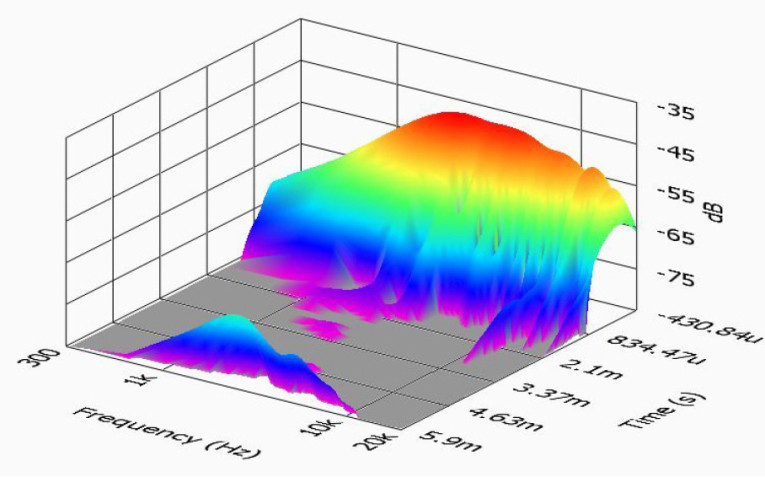
This article was originally published in Voice Coil, March 2017.




